5 Signs You're Using AI as an Assistant When It Should Be Your Advisor
And exactly what to change starting with your next big decision
Hey Adopter,
Your company spent six figures on AI tools. Your team uses them to write emails and summarize meetings. You’re getting 10% productivity gains when you could be transforming how decisions get made.
The problem? You’re treating AI like a coworker when you should be treating it like a co-thinker.
Most teams are stuck at the assistant level
Microsoft studied 297 early Copilot users. They found something revealing. Teams that got real value weren’t using AI for one-off tasks. They were iterating. Drafting, refining, pushing back, collaborating.
The others? They treated it like a calculator. Type in a question, get an answer, move on.
Here’s the gap. AI as coworker handles execution. It automates processes, answers questions, drafts content. It’s efficient. It saves time. It’s also limited.
AI as co-thinker challenges your thinking. It asks clarifying questions. It surfaces blind spots. It acts like a strategic thought partner, not a tool waiting for instructions.
The ROI gap nobody talks about
Walk the Talk Lab deployed personalized AI co-thinkers across law firms and consulting boutiques. Not generic chatbots. Purpose-built strategic partners trained on each client’s data, processes, and methods.
Their Sales Navigator Co-Thinker analyzes prospect conversations and suggests strategic approaches. Their Strategy Advisor embeds with project teams. Their Trust by Design Coach helps HR identify organizational bottlenecks.
Results? Faster decisions. Preserved institutional knowledge. Less dependency on external consultants.
Compare that to the typical deployment. Softchoice reported 97% reduction in meeting summary time. Good. But not strategic.
The difference matters. Assistant-level AI cuts costs. Co-thinker AI changes outcomes.
Why radiologists outperform both humans and AI alone
Studies on medical diagnosis found something counterintuitive. Radiologists working with AI achieved 90% accuracy. Humans alone? 81%. AI alone? 73%.
The pattern holds across fields. Financial traders pair AI’s millisecond market analysis with human judgment on strategy. Creative teams use AI for concept generation while humans provide direction and cultural understanding.
Bird classification research confirmed it. Human-AI collaboration beat either party working solo.
Your takeaway? Stop asking “Can AI do this task?” Start asking “How do humans and AI think through this problem together?”
The four-stage path nobody follows correctly
WRITER mapped enterprise AI adoption into four stages. Most companies skip straight to stage three and wonder why nothing works.
Stage one is crawl. Basic AI literacy. Assistive agents for email and document work. Your team learns to prompt.
Stage two is walk. Knowledge agents connected to internal data. RAG systems that break down information silos. Teams start asking complex questions.
Stage three is run. Workflow agents that make autonomous decisions within boundaries. Multi-step business processes get orchestrated.
Stage four is fly. Multiple specialized agents collaborate on strategic challenges. This is where co-thinking happens.
68% of C-suite executives report that rushed AI integration creates division. 42% say it’s tearing companies apart.
Why? They jumped to stage three without building the foundation. They deployed agents before teaching people to collaborate with them.
How do you configure a strategic partnership?
outlines the setup most teams miss. Enable memory. Create dedicated projects for continued context. Write custom instructions that promote critical thinking over agreement.Then change how you interact. Think through problems yourself first. Provide a comprehensive context about your company, role, and objectives. Share unstructured thoughts. Ask open questions like “What am I missing?” instead of leading with your conclusion.
Mark Hinkle takes it further. He uses different models for different thinking modes. Reasoning-focused models for logic. Creative models for storytelling. Domain-specific models for technical accuracy.
His critique process runs three layers. Structural review for organization and argument strength. Functional review for accuracy and logic gaps. Style review for clarity and voice.
This isn’t prompt engineering. It’s an intellectual partnership design.
McDonald’s China went from 2,000 to 30,000 monthly transactions
Real deployment numbers tell the story. McDonald’s China saw 15x growth in employee AI transactions after implementing Azure AI and GitHub Copilot.
NTT DATA automated 65% of IT service desk work. HEINEKEN built multilingual voice bots for sales reps. Advanced IT improved sales and marketing efficiency by 50%.
These aren’t productivity theatre. They’re operational transformations.
But here’s what the case studies don’t show. The companies that got these results didn’t just deploy tools. They redesigned how work gets done. They built collaboration patterns between humans and AI. They trained people to co-think, not just co-work.
The translation moment that changes everything
You’re at a decision point. Your team already has AI access. The question isn’t whether to adopt AI. It’s how to use what you have.
Assistant mode gets you incremental gains. Email drafts. Meeting notes. Document summaries. Useful. Not transformative.
Strategic partner mode gets you different outcomes. Better decisions. Faster innovation cycles. Institutional knowledge that doesn’t walk out the door.
Harvard research on AI leadership skills confirms what practitioners already know. The winners aren’t the ones with the best tools. They’re the ones who redesigned collaboration.
Your move! Pick one high-stakes decision your team faces this month. Don’t ask AI to execute a task. Ask it to co-think the problem. Provide full context. Share your reasoning. Ask where you’re wrong. Iterate.
You’ll know it’s working when AI pushes back on your assumptions instead of just agreeing with you.
That’s when assistant becomes partner. That’s when cost-cutting becomes strategic advantage. That’s when you stop leaving 90% of your AI investment on the table.
Adapt & Create,
Kamil



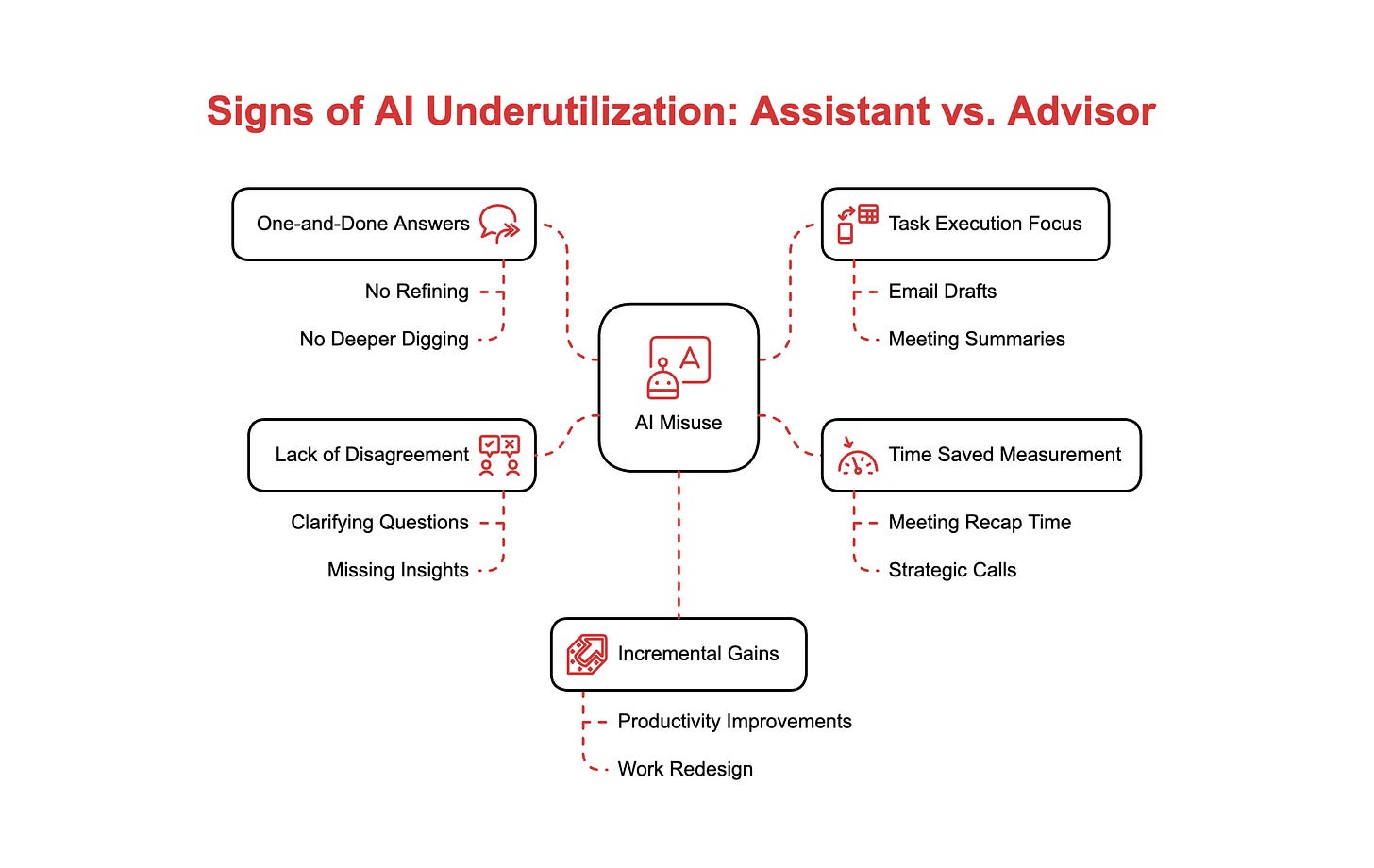
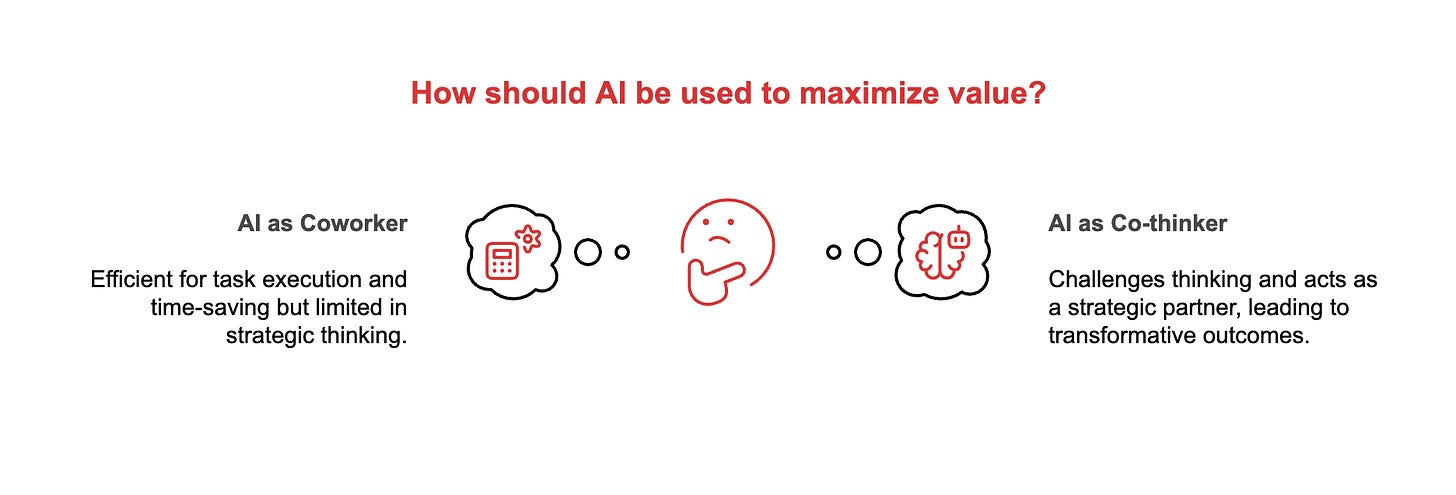
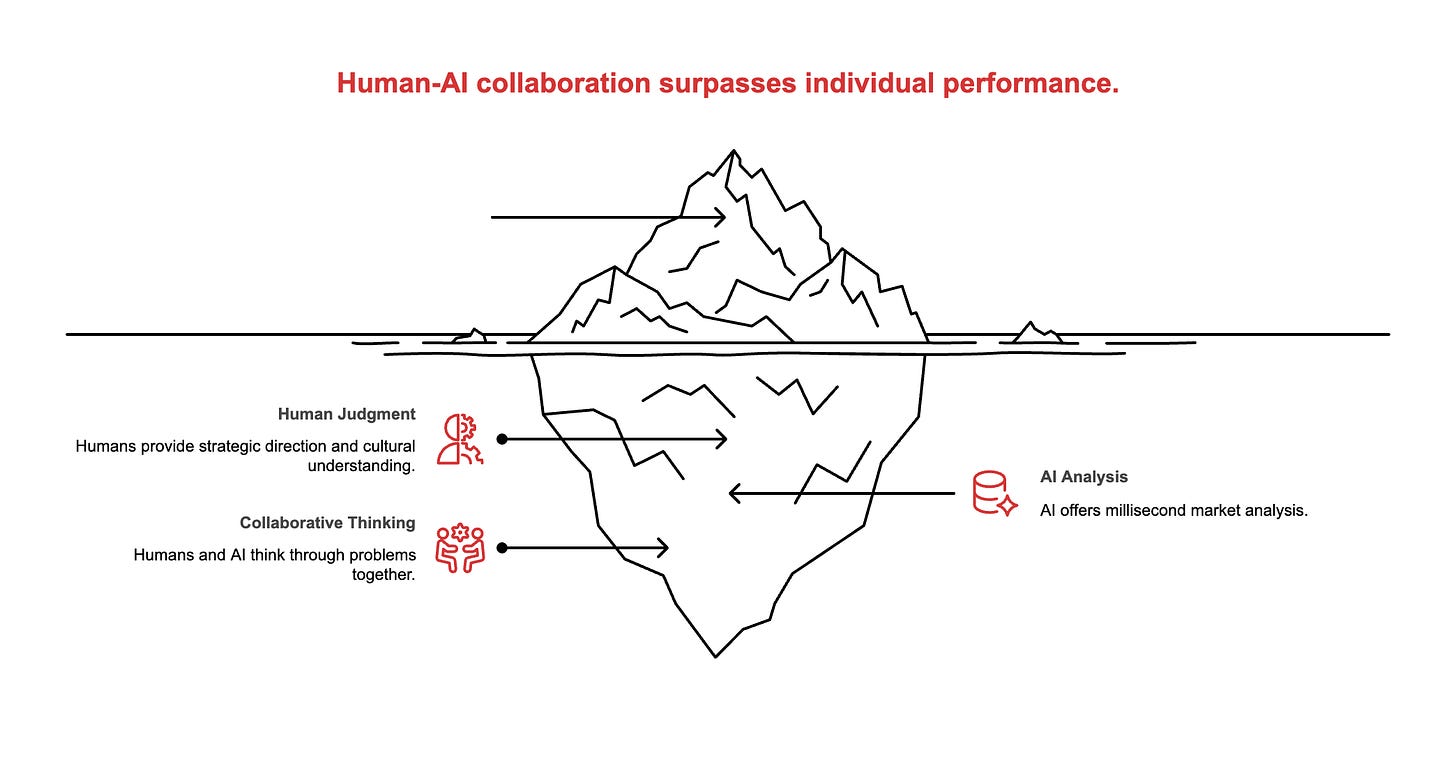
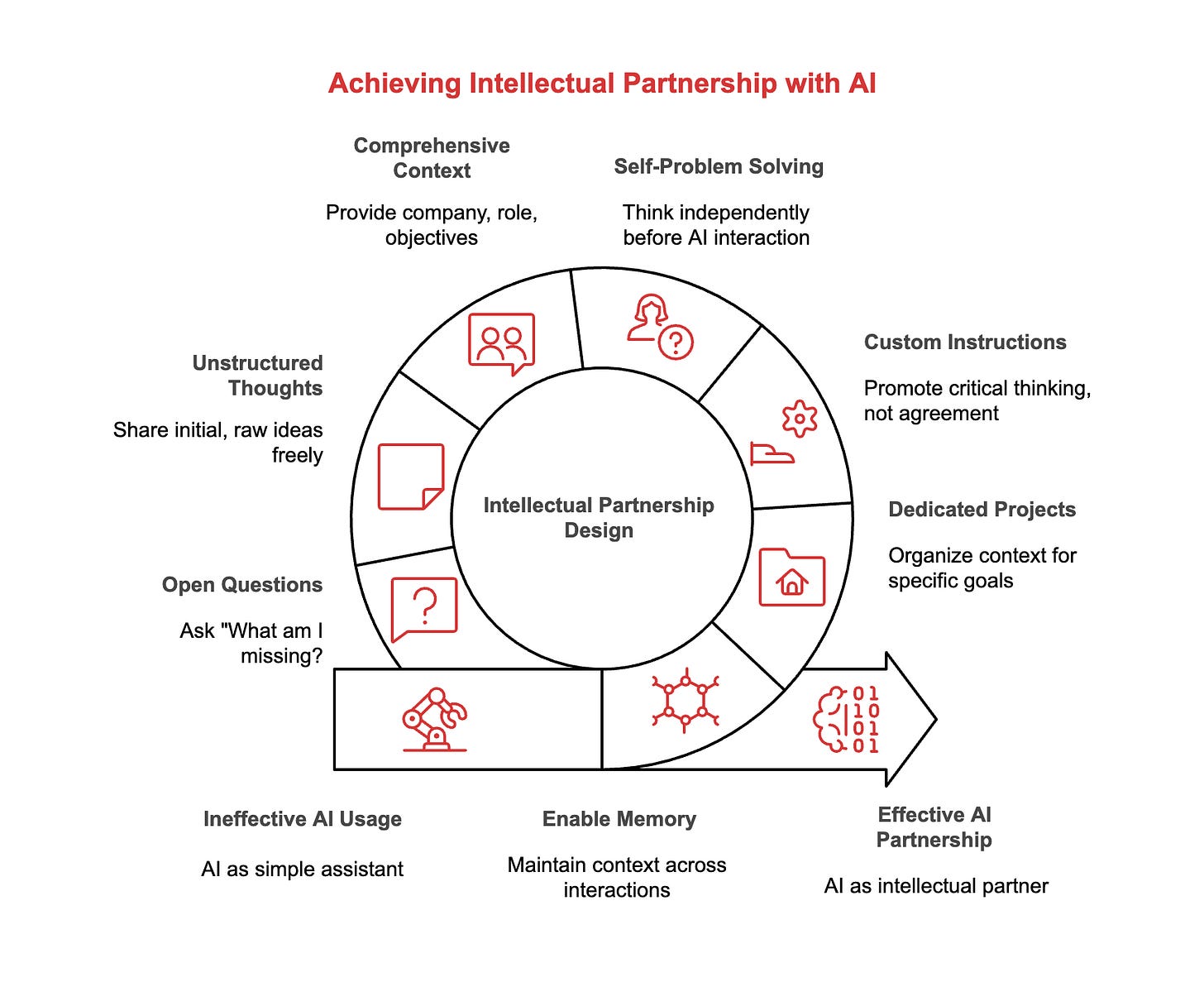

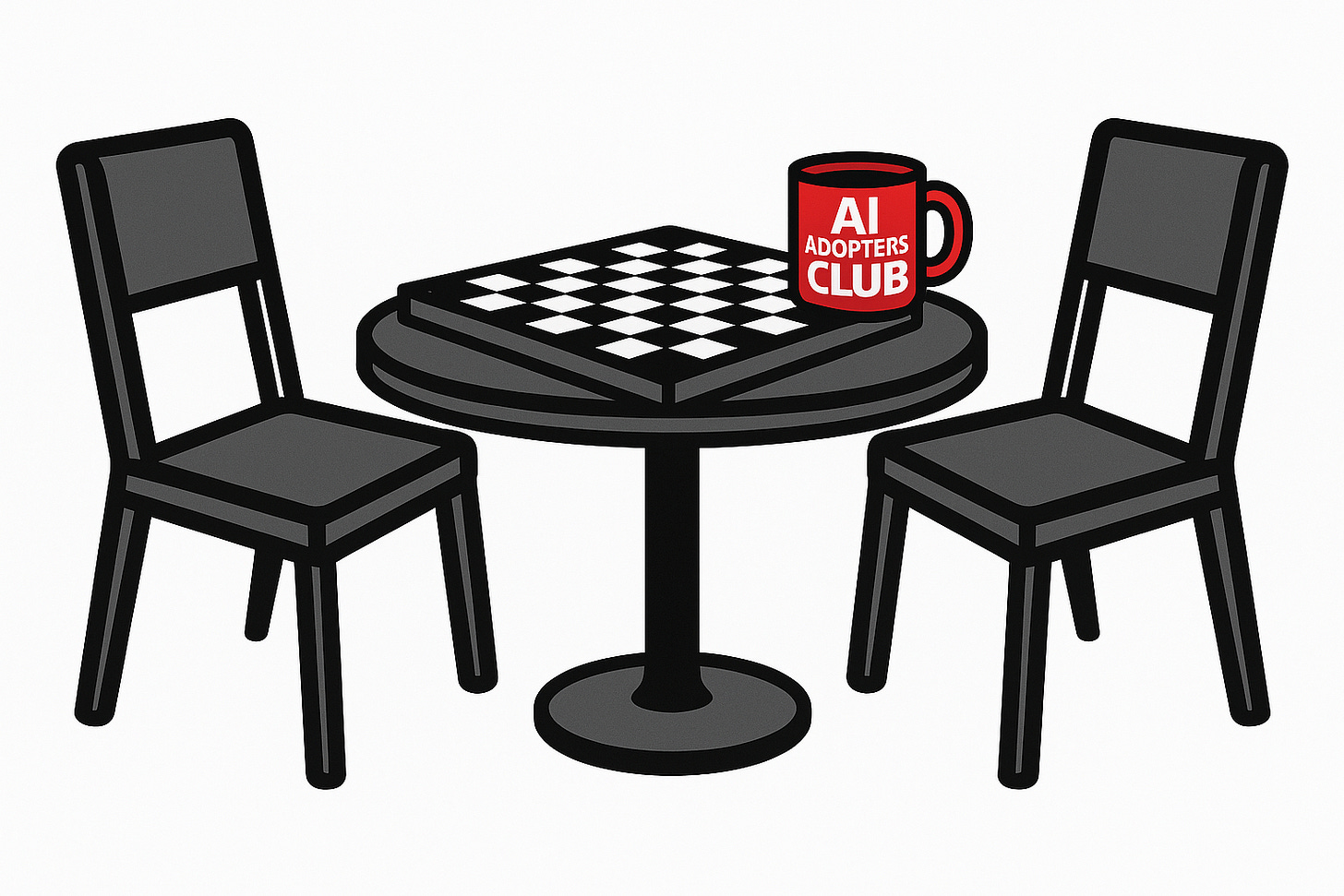
Gem of an article ..collaboration of HI & AI